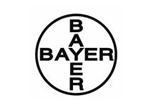MS SQL Maestro online Help
Procedures
A stored procedure is a saved collection of Transact-SQL statements or a reference to a Microsoft .NET Framework common language runtime (CLR) method that can take and return user-supplied parameters. Procedures can be created for permanent use or for temporary use within a session, local temporary procedure, or for temporary use within all sessions, global temporary procedure.
New procedures are created within Create Procedure Wizard. In order to run the wizard you should either
| • | select the Object | Create Database Object... main menu item; |
| • | select the Procedure icon in the Create Database Object dialog |
or
| • | select the Procedures list or any object from that list in the explorer tree; |
| • | select the Create New Procedure... item from the popup menu |
or
| • | open Schema Editor and the Procedures tab there; |
| • | press the Insert key or select the Create New Procedure item from the popup menu (alternatively, you may use the corresponding link of the Navigation Bar). |
To create a new procedure with the same properties as one of the existing procedures has:
| • | select the Object | Duplicate Database Object... main menu item; |
| • | follow the instructions of Duplicate Object Wizard. |
|
Procedures can be edited within Procedure Editor. In order to run the editor you should either
| • | select the procedure for editing in the explorer tree (type the first letters of the procedure name for quick search); |
| • | select the Edit Procedure... item from the popup menu |
or
| • | open Schema Editor and the Procedures tab there; |
| • | select the procedure to edit; |
| • | press the Enter key or select the Edit Procedure item from the popup menu (alternatively, you may use the corresponding link of the Navigation Bar). |
You can change the name of the procedure using the Rename Procedure dialog. To open the dialog you should either
| • | select the procedure to rename in the explorer tree; |
| • | select the Rename Procedure item from the popup menu |
or
| • | open Schema Editor and the Procedures tab there; |
| • | select the procedure to rename; |
| • | select the Rename Procedure item from the popup menu (alternatively, you may use the corresponding link of the Navigation Bar). |
|
To execute a procedure:
| • | select the procedure in the explorer tree (type the first letters of the procedure name for quick search); |
| • | select the Edit Procedure... item from the popup menu; |
| • | execute the procedure using the Execute link of the Navigation Bar |
or
open Schema Editor and the Procedures tab there;
| • | select the procedure to execute; |
| • | press the Enter key or select the Edit Procedure item from the popup menu, or use the corresponding link of the Navigation Bar; |
| • | execute the procedure using the Execute link of the Navigation bar. |
|
To drop a procedure:
| • | select the procedure to drop in the explorer tree; |
| • | select the Drop Procedure item from the popup menu |
or
| • | open Schema Editor and the Procedures tab there; |
| • | select the procedure to drop; |
| • | press the Delete key or select the Drop Procedure item from the popup menu (alternatively, you may use the corresponding link of the Navigation Bar) |
and confirm dropping in the dialog window.
|





 Download
Download Buy
Buy